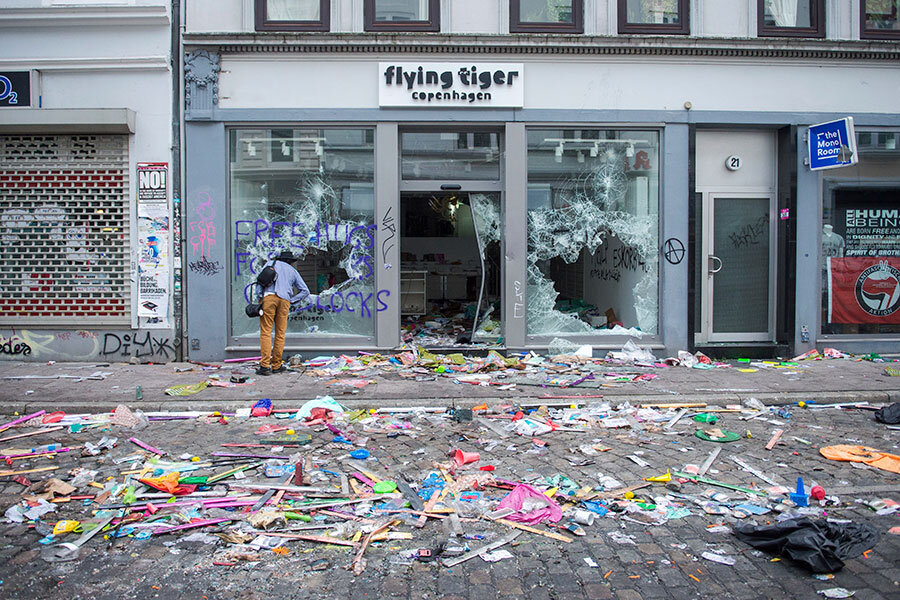In G20 protests, a different view of extremism
For Germans, in particular, last weekend was eye-opening.
For some time, the country has been concerned about its far-right political fringe. Recent years have seen rallies by Pegida, an anti-Islamic group, gain momentum, as well as those by the far-right Alternative for Germany party. Germany, it seemed, was in the midst of its own turn to the populist right.
But at the Group of 20 summit last weekend, something entirely different came to the fore: left-wing extremism. Germans were shocked by what they saw in the streets of Hamburg: protesters turning the event into a gallery of water cannons and broken glass.
We’ve seen this before, at the 1999 Seattle World Trade Organization protests, at President Trump's inauguration, and elsewhere: a class of hardened left-wing protesters turning free expression into something darker. The German Ministry recently concluded: “In the past few years the acceptance and intensity of violence in the far-left scene has noticeably increased. This is especially true of violence against police and political enemies (particularly real or imagined right-wing extremists.),” according to the German news agency Deutsche Welle.
The point is not to chart right-wing and left-wing violence in order to assign blame and decide which is worse. The point is to recognize that extremism in whatever form is a red flag – a signal that sections of society are feeling so impotent and adrift that they see no choice but to resort to violence and extremist ideologies.
One expert has long seen more similarities than differences among extremists. Daniel Koehler of the German Institute on Radicalization and De-radicalization Studies has worked with neo-Nazis and Islamic State recruits.
“They talk a lot about justice. They talk a lot about freedom. They want to change the society into a positive direction. They believe that they're doing something good for humanity,” he told NPR.
Indeed, for many radicals, violence is a desperate, though misguided, step to do good, he said. “Positive aspects like quest for significance, justice, help [for the] poor, [defense of] women and children, Syria, delivering humanitarian aid,” he said.
What kindles violence is the mix with the negative: “they have not felt that they are part of a society,” Mr. Koehler said.
Koehler’s answer: Flip the equation. Take away the bad influences and turn up the volume on the good, like finding role models for extremists to look up to, he told the Monitor’s Warren Richey for his ISIS in America series.
“The only thing we can do is build up the family or the social environment as a counterforce,” he said. “That is the only way we can succeed.”
It might sound like Parenting 101. In many ways, it is. And that puts the battle against extremism of all stripes in a different light.






